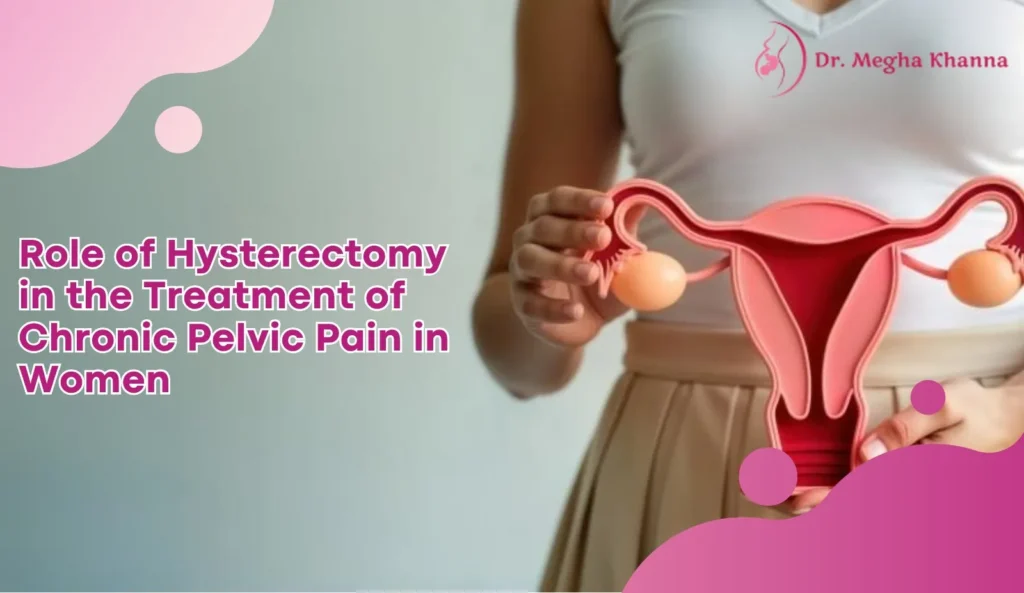-
Ganesh Talkies, Kolkata
Ganesh Talkies, Kolkata

Admins
25.07.2025
Pelvic Pain in Women can stem from several causes—learn about the symptoms, when to seek help, and insights from a reputed gynecologist. Understanding Pelvic Pain in Women: A Health Concern That Needs Attention Pelvic pain is one of the most commonly misunderstood health concerns among women. Often dismissed as “normal period cramps” or mistaken for gastrointestinal issues, Pelvic Pain in Women can be a sign of something much deeper—sometimes chronic, sometimes urgent. But how do you differentiate what’s typical from what’s a red flag? Understanding Pelvic Pain in Women: A Health Concern That Needs AttentionWhy It’s Crucial to Listen to Your BodyCommon Symptoms of Pelvic Pain in WomenPotential Causes Behind Pelvic PainGynecological CausesUrological CausesGastrointestinal CausesMusculoskeletal and Neurological CausesWhen Should You Be Concerned?What to Expect During DiagnosisHow Is Pelvic Pain Treated?The Emotional Toll of Pelvic PainAddressing Pelvic Pain in Women with AwarenessFAQs on Pelvic Pain in WomenDon’t Ignore the Signs This article offers a comprehensive breakdown of what pelvic pain means, possible underlying causes, and most importantly—what symptoms you shouldn’t ignore. Why It’s Crucial to Listen to Your Body Women's bodies are intricate systems, and pelvic pain isn’t always a standalone symptom. It often points to underlying conditions that could range from gynecological to musculoskeletal to gastrointestinal issues. The earlier you recognize these signs, the faster you can get the help you need. Common Symptoms of Pelvic Pain in Women Not all pelvic pain is created equal. Some types are dull and persistent; others are sharp and sudden. Here’s a breakdown of symptoms that should raise concern: Persistent cramping or aching pain in the lower abdomen Pain during menstruation that worsens over time Discomfort during sexual intercourse Pain while urinating or during bowel movements Sharp, stabbing sensations that come and go Lower back pain accompanying abdominal pain Sudden onset of severe pelvic pain These symptoms may come alone or in combination. It's important to track the duration, intensity, and frequency of pain and how it affects your daily life. Potential Causes Behind Pelvic Pain The reasons behind Pelvic Pain in Women vary widely depending on age, health history, and other symptoms. Some common causes include: Gynecological Causes Endometriosis: Tissue similar to the uterine lining grows outside the uterus. Fibroids: Non-cancerous growths in or on the uterus. Pelvic Inflammatory Disease (PID): Often caused by untreated STIs. Ovarian cysts or torsion: Can cause sudden, severe pain. Menstrual disorders: Painful periods (dysmenorrhea) or irregular...

Admin
23.07.2025
Hello Reader! Welcome to the blog page of Dr. Megha Khanna, one of the best lady gynecologist in Kolkata. Chronic pelvic pain in women is a common yet complex condition that affects millions globally. It often disrupts daily life, hampers productivity, and severely impacts emotional well-being. As one of the best gynecologists in Kolkata, I have treated countless women grappling with persistent pelvic discomfort. One of the treatment options that is often considered in severe and unresponsive cases is hysterectomy—the surgical removal of the uterus. But is hysterectomy always the answer? Let’s explore the role of hysterectomy in managing pelvic pain in women, its benefits, risks, and when it’s truly warranted. What is Chronic Pelvic Pain?Common Causes of Chronic Pelvic Pain in WomenWhen is Hysterectomy Considered?Types of HysterectomyBenefits of Hysterectomy for Chronic Pelvic PainRisks and ConsiderationsAlternatives to Hysterectomy1. What is the role of hysterectomy in treating chronic pelvic pain in women?2. Is hysterectomy always necessary for pelvic pain in women?3. Can pelvic pain persist after hysterectomy?4. What are the risks of undergoing a hysterectomy for pelvic pain?5. Who is the ideal candidate for hysterectomy to treat pelvic pain? What is Chronic Pelvic Pain? Chronic pelvic pain is defined as pain in the lower abdomen or pelvis that lasts for six months or longer. It may be: Constant or intermittent Mild to severe Related or unrelated to menstruation or intercourse This condition is not just a symptom but can be a diagnosis in itself. As the best gynecologist in Kolkata, I always emphasize a thorough evaluation before jumping to conclusions. Common Causes of Chronic Pelvic Pain in Women Understanding the root cause is essential. Some of the most common conditions causing pelvic pain in women include: Endometriosis Adenomyosis Uterine fibroids Pelvic inflammatory disease (PID) Interstitial cystitis Irritable bowel syndrome (IBS) Pelvic floor dysfunction In some cases, no identifiable cause is found, complicating the treatment strategy further. When is Hysterectomy Considered? A hysterectomy is usually not the first line of treatment. However, it is considered when: All conservative treatments (painkillers, hormonal therapy, physical therapy) have failed. The patient has a diagnosed structural cause like large fibroids or adenomyosis. The pain is significantly affecting the woman’s quality of life. The woman does not wish to have future pregnancies. Being one of the best gynecologists in Kolkata, I always ensure that my patients fully understand the nature of the surgery, its permanence, and the...

Admins
16.07.2025
Painful periods can disrupt life, but are treatable with expert care. Learn why women experience cramps and how a reputed gynecologist can help. For many women, periods are an inevitable part of life—a monthly reminder of their body’s natural cycle. But for some, menstruation comes with an added burden: painful periods that make even the simplest tasks feel overwhelming. What Are Painful Periods?Why Do Some Women Experience More Pain Than Others?Excess ProstaglandinsUnderlying Medical ConditionsAge and Hormonal FluctuationsLifestyle FactorsWhen Should You See a Gynecologist?Effective Remedies to Manage Painful PeriodsLifestyle ModificationsHome RemediesMedical TreatmentsHow to Deal With Painful Periods NaturallyAcupuncture and AcupressureDietary ChangesMind-Body TechniquesFAQs About Painful PeriodsTake Charge of Your Menstrual Health With the Right Care If you’ve ever found yourself curled up in bed with heating pads or reaching for painkillers every month, you’re not alone. It’s estimated that nearly 70% of women experience menstrual cramps at some point in their lives. But why do some women have more severe pain than others? And when should you seek help? Let’s dive into the causes, symptoms, and remedies for painful periods to help you understand your body better. What Are Painful Periods? Painful periods, also called dysmenorrhea, refer to cramping pain in the lower abdomen during menstruation. These cramps occur because of uterine muscle contractions triggered by hormone-like substances called prostaglandins. There are two main types of dysmenorrhea: Primary Dysmenorrhea: This is the most common type and is not linked to any specific health condition. It often starts in the teen years and lessens with age or after childbirth. Secondary Dysmenorrhea: This happens due to underlying medical conditions like endometriosis or fibroids and typically worsens over time. Why Do Some Women Experience More Pain Than Others? While mild cramps are normal, some women experience debilitating pain that affects work, studies, and social life. The reasons for this vary: Excess Prostaglandins High levels of prostaglandins lead to stronger uterine contractions. These contractions can compress blood vessels and reduce oxygen supply, causing pain. Underlying Medical Conditions Endometriosis: Tissue similar to the uterine lining grows outside the uterus, causing severe pain. Fibroids: Non-cancerous growths in the uterus can increase cramping and bleeding. Adenomyosis: The uterine lining grows into the muscle wall of the uterus, leading to heavy, painful periods. Pelvic Inflammatory Disease (PID): Infection in reproductive organs can cause long-lasting pelvic pain. Age and Hormonal Fluctuations Teenagers and women under 30 often have higher prostaglandin levels....

Admins
12.07.2025
The role of Vitamin D in pregnancy is vital for both mother and baby health. A reputed gynecologist can guide you in maintaining healthy levels and preventing complications for a safe journey. Vitamin D is often called the “sunshine vitamin,” but its importance goes far beyond bone health. For women during pregnancy, Vitamin D plays a crucial role in ensuring both maternal wellbeing and healthy fetal development. Why Is Vitamin D So Important During Pregnancy?Here’s why Vitamin D matters: Supports Baby’s Bone Development Strengthens Maternal Immunity Helps Prevent Pregnancy Complications Affects Long-Term Child HealthCommon Causes of Vitamin D Deficiency in Pregnant WomenThe Role of Vitamin D in Preventing Pregnancy Complications Preventing Preeclampsia Reducing Gestational Diabetes Risk Supporting Healthy Birth WeightHow to Maintain Healthy Vitamin D Levels During Pregnancy 1. Get Moderate Sunlight 2. Include Vitamin D-Rich Foods 3. Consider Supplements (if advised) 4. Monitor Levels RegularlyThe Role of Vitamin D in Boosting Maternal and Fetal HealthFAQs About Vitamin D and PregnancyBuild a Healthier Future With Optimal Vitamin D in Pregnancy In India, studies show that a significant percentage of women of reproductive age are deficient in Vitamin D. This makes understanding its impact even more essential, especially for those planning or experiencing pregnancy. This article explores the role of Vitamin D in pregnancy, its benefits, potential risks of deficiency, and practical ways to maintain optimal levels for a safe and healthy journey to motherhood. Why Is Vitamin D So Important During Pregnancy? Vitamin D functions like a hormone in the body, regulating calcium and phosphate levels critical for developing strong bones and teeth. For pregnant women, it also influences other vital systems such as immunity, mood regulation, and even glucose metabolism. Here’s why Vitamin D matters: Supports Baby’s Bone Development Ensures the fetus develops strong bones and teeth. Helps in skeletal formation during the second and third trimesters. Strengthens Maternal Immunity Reduces risk of infections that could harm both mother and baby. Helps Prevent Pregnancy Complications Low levels are linked to preeclampsia, gestational diabetes, and preterm birth. Affects Long-Term Child Health Deficiency in mothers may lead to a higher risk of asthma and allergies in children. Common Causes of Vitamin D Deficiency in Pregnant Women Even in sunny countries like India, Vitamin D deficiency is surprisingly common. Here’s why: Limited Sun Exposure: Cultural practices, indoor lifestyles, and air pollution reduce sun exposure. Dietary Gaps: Few natural food sources contain sufficient...